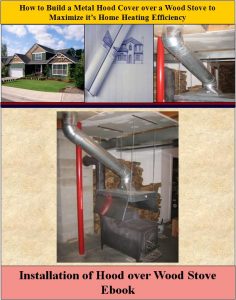Today’s Wood Stoves offer Efficiency, Looks, and Home Heating Cost Savings
By Mark J. Donovan
|
|
The cost of heating your home with oil, propane, or electricity continues to rise every year. One way to combat the ever-increasing home heating energy bills is to install a wood stove in your home. Today’s new wood stoves can produce an incredible amount of heat in a relatively small footprint, are highly efficient, and are aesthetically attractive. Also, unlike fossil fuels, wood is a renewable resource. Moreover, newer EPA certified models are much more environmentally friendly due to their high level of burning efficiency. Thus, they burn wood better than ever resulting in less soot and smoke going up the chimney.
If you are considering purchasing a wood stove below is a list of a few key things to keep in mind. |
A wood stove is a great back up heating source for the times when the electricity goes out and/or you run out of home heating oil/propane. We frequently lose electricity in New Hampshire for up to several days at a time during the winter months, and even if a home burns oil or propane, electricity is still required for powering the water circulation pumps and/or heat exchanger fans.
In addition, if you order the wood green and in long lengths, and are willing to cut and season the wood yourself, you can realize even greater cost savings.
Wood stoves come in all different sizes, types, and shapes. Wood stove types vary from traditional pot belly wood stoves to ultra-modern chic ones. Wood stoves are available as free standing types, fireplace insert types, corner types, or whole-house wood burning systems. So if you have an old wood-burning fireplace that you rarely use, consider installing a wood stove insert type. Also, wood stoves can be purchased so that wood is fed into them from either the side or front. In addition, you can purchase wood stoves with or without glass firebox views.
Also, consider purchasing a wood stove with add on features, such as features that allow you to hook the wood stove up to water heaters or radiators. Wood stoves can also be purchased with self loading hoppers, automatic ignition systems, programmable timer settings and remote controls, albeit these features are typically only found in whole-house wood burning heating systems.
Though the wood stoves of today are built with safety in mind, make sure to locate your wood stove in a safe area of the home with fire-proof material on the floor and walls that are near it. Note that there are specific fire codes that need to be adhered to when installing a wood stove. Make sure to check with your local building inspector prior to buying a wood stove to understand the installation codes.
For information on Restoring Baseboard Heating Element Covers, see the Restoring Baseboard Heating Element Covers eBook from HomeAdditionPlus.com. The Restoring Baseboard Heating Element Covers Ebook provides easy to understand, step-by-step instructions, on how to restore Baseboard Heating Element Covers so that they look new again. Pictures are included for every key step in the process.
For information on how to maximize a wood stove’s heating efficiency, see HomeAdditionPlus.com’s Installation of Hood over Wood Stove eBook.
For information on how to clean a wood stove pipe, see HomeAdditionPlus.com’s How to Clean a Wood Stove Pipe eBook.
Related Information
- Tips on Buying a Wood Stove
- Burning with Wood Stove Tips
- Wood Stoves are Timeless Classics that Still Provide Major Benefits
Additional Heating and Cooling Resources from Amazon.com
 |
 |
Free Heating and Cooling Price Quotes with No Obligation!
Fill out our 3-5 minute quick and easy form, and receive a free price quote on heating & cooling from one of our pre-screened and licensed HVAC contractors. This process is free and there is no obligation to continue once you receive your heating & cooling price estimate.


